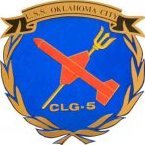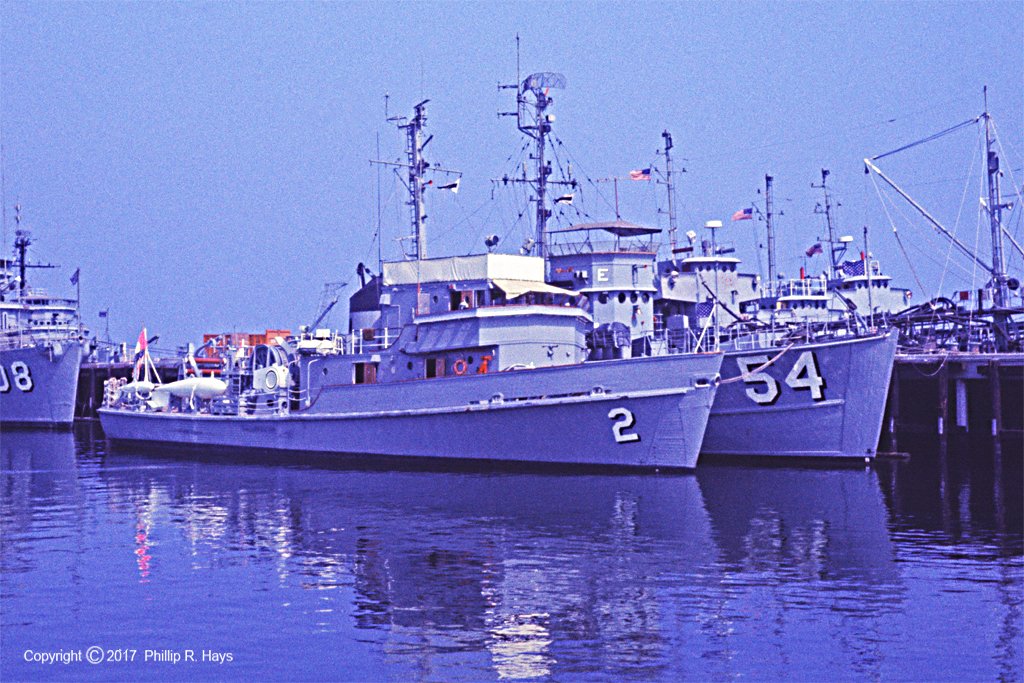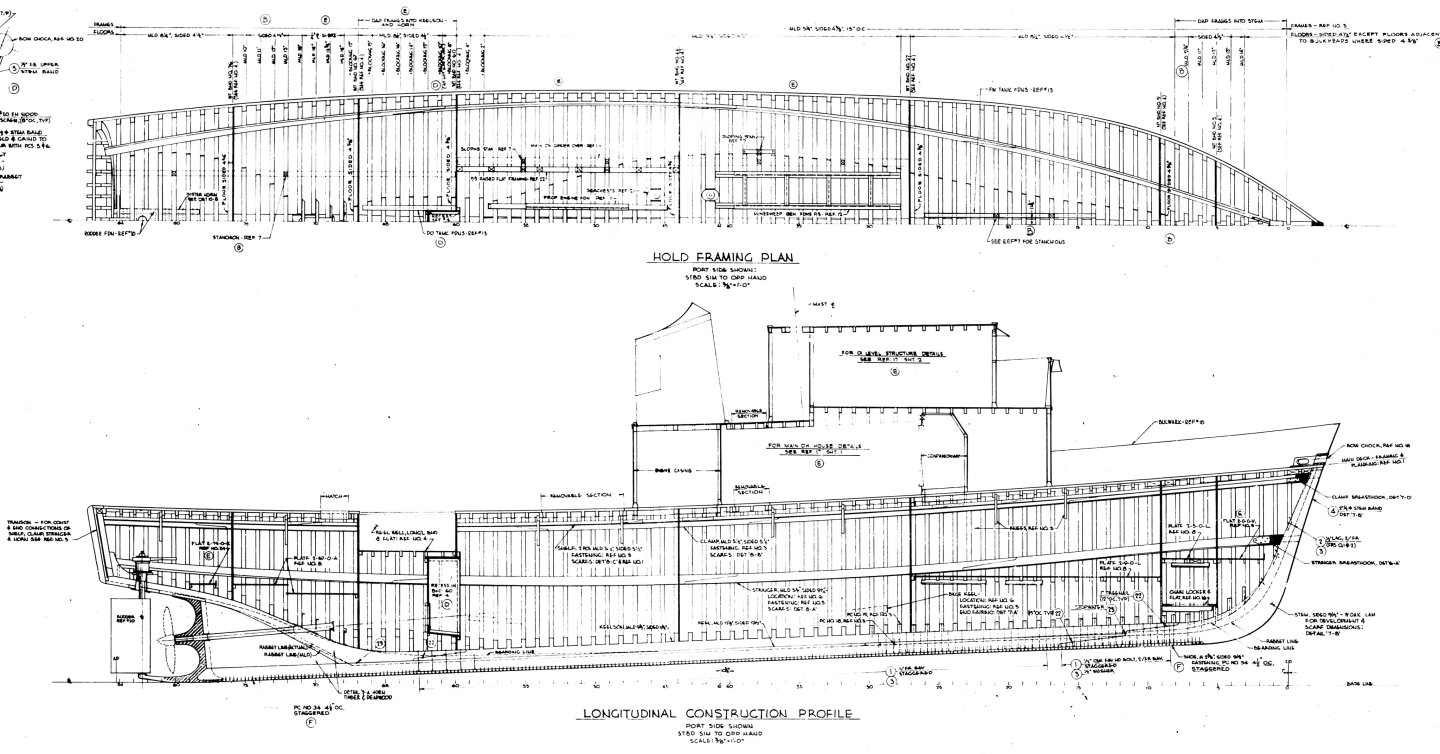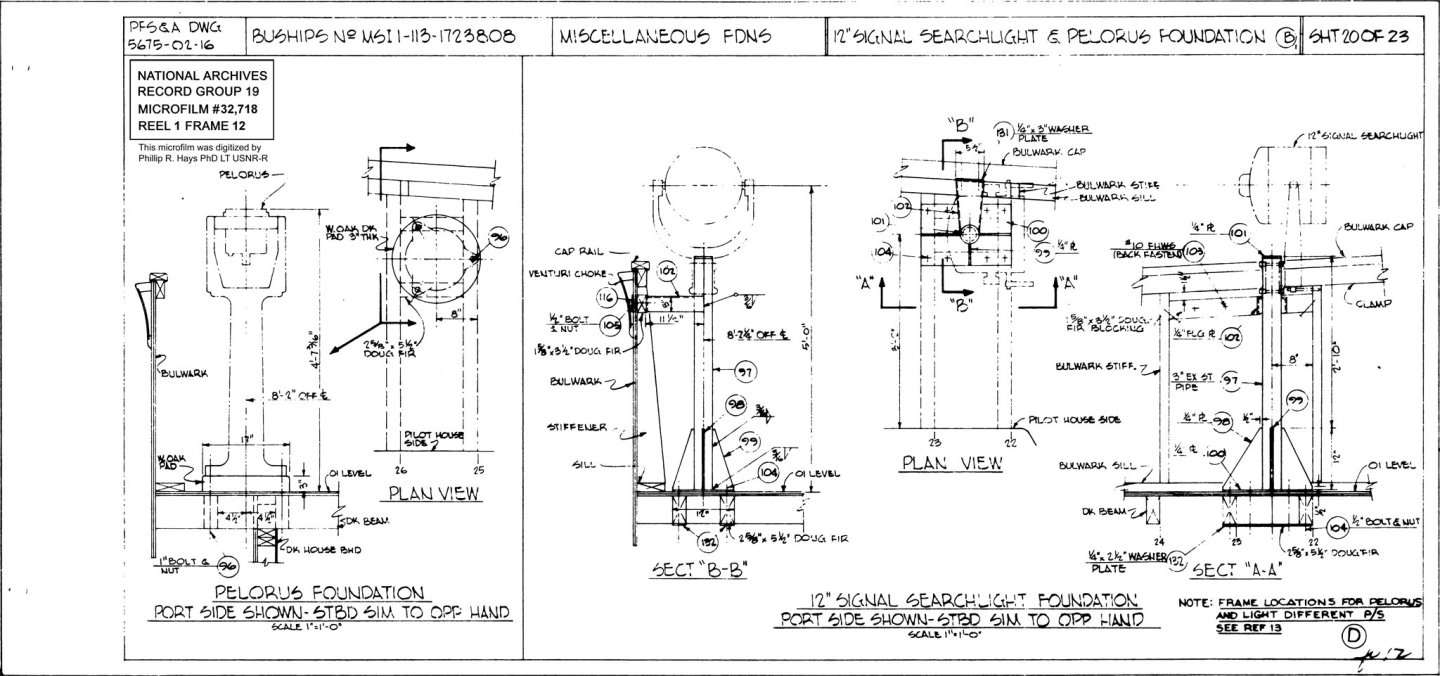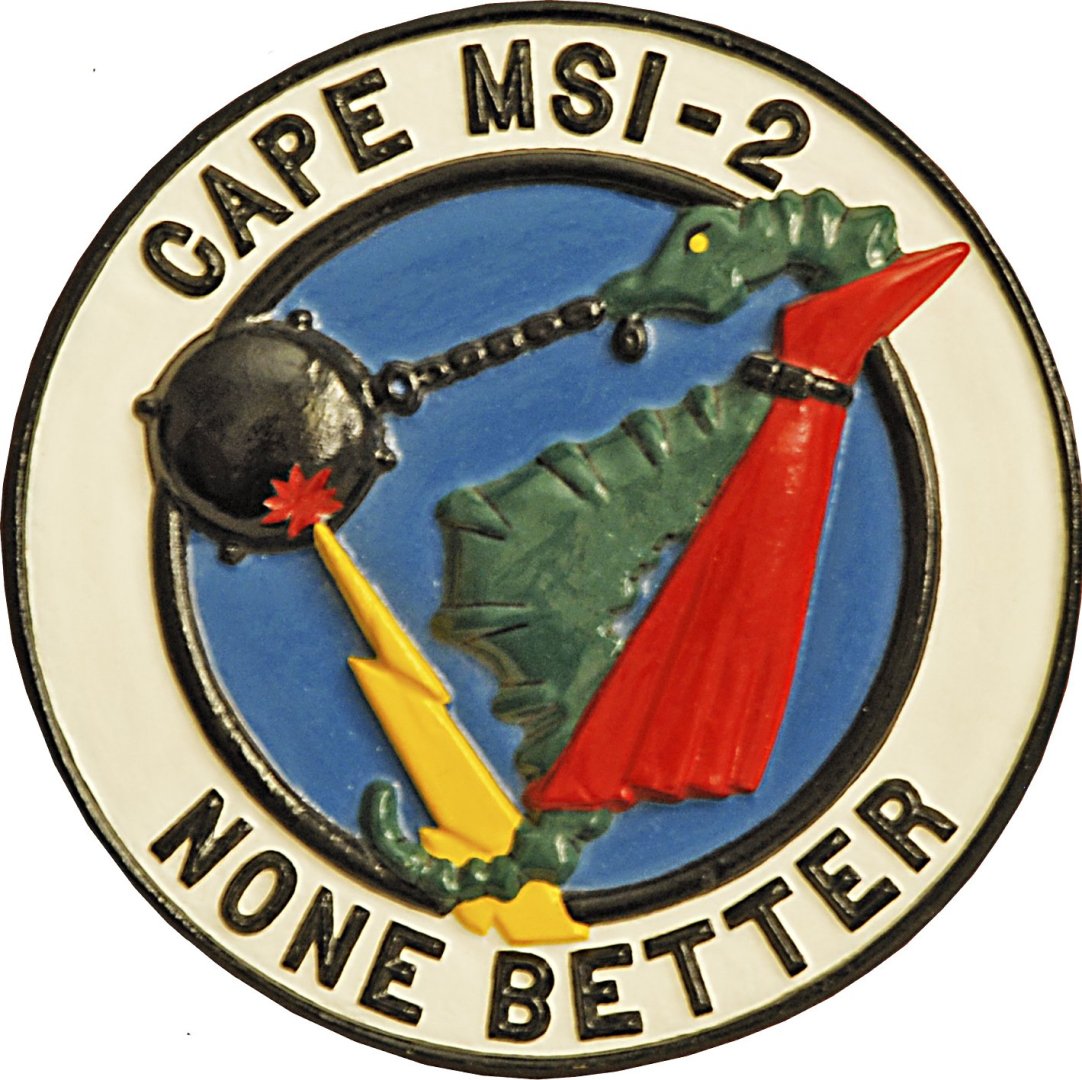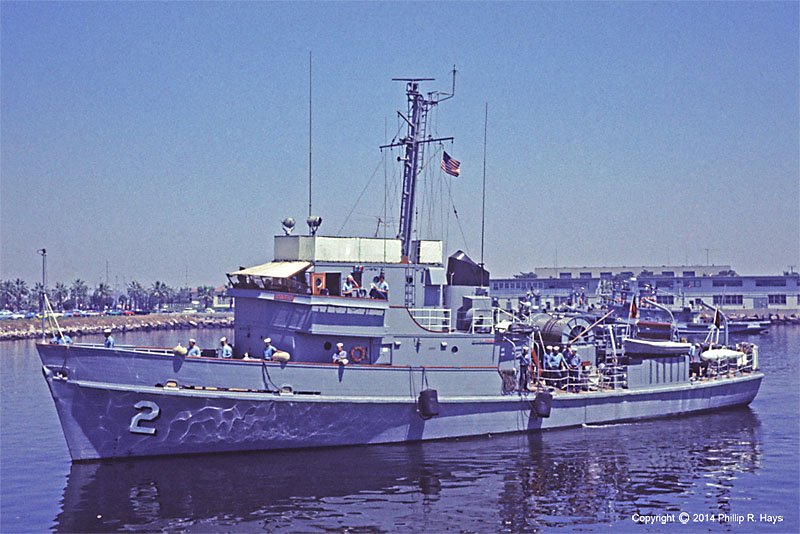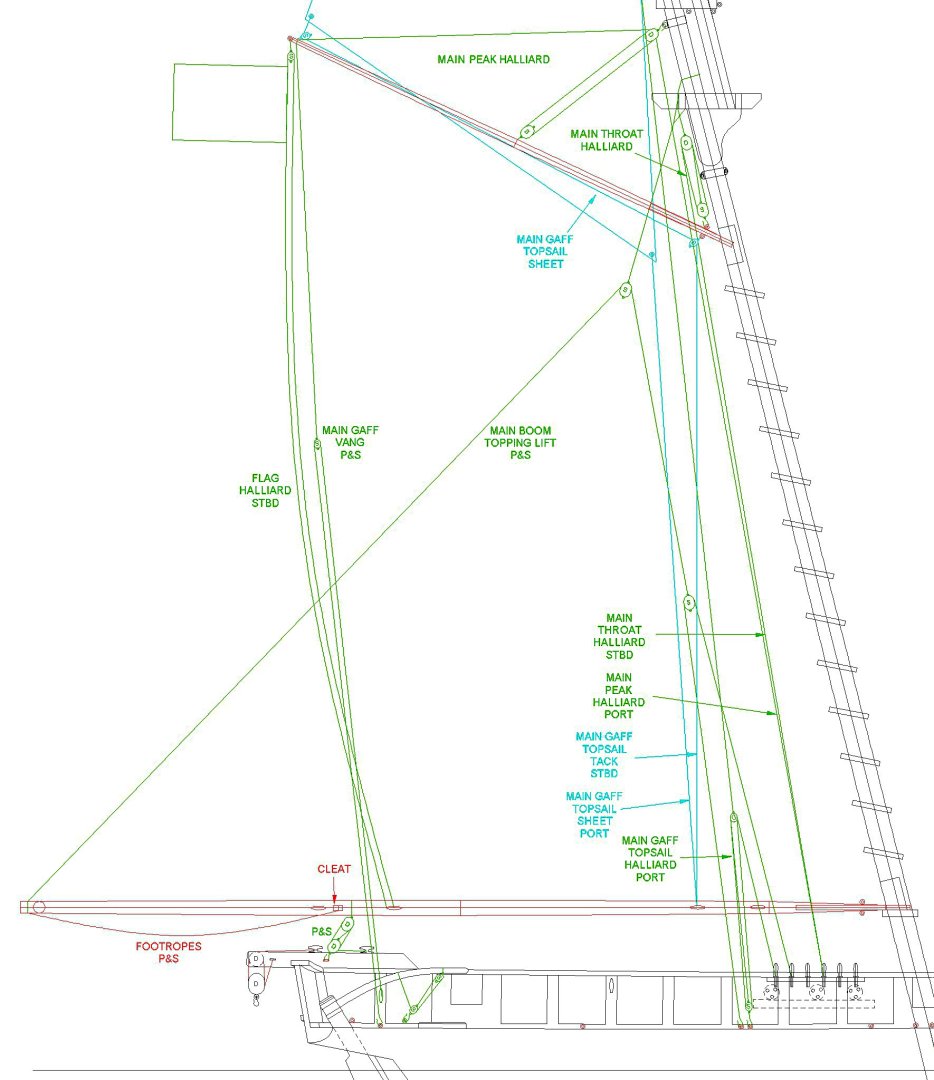-
Posts
2,422 -
Joined
-
Last visited
Content Type
Profiles
Forums
Gallery
Events
Everything posted by Dr PR
-
Keith, McNamara's 100,000 was a test group to see if those who failed the Navy's entrance exam could still perform useful duties. They were draftees - the Navy took a few and the rest became grenade catchers. We had two men on board from this group. Both were bosun's mates. One was a total basket case - couldn't tie his shoe laces without help. But he was a working machine - like a robot. Put him to work chipping paint and he wouldn't stop until the whole ship was stripped. You had to tell him to stop for lunch or he would work right through. The other fellow was a logger from the Pacific Northwest. He had been a log truck driver before he was drafted. He was pretty smart - I figure he deliberately failed the induction tests to avoid the draft, but McNamara took him anyway! He was our helmsman.
- 447 replies
-
- minesweeper
- Cape
-
(and 1 more)
Tagged with:
-
Tom, I was Nuclear/Special Weapons Officer on the OK City. Follow these links if you want more details: https://www.okieboat.com/Life In A Tin Box.html https://www.okieboat.com/index.html
- 447 replies
-
- minesweeper
- Cape
-
(and 1 more)
Tagged with:
-
Tom, I was in A6904 Company - graduated from OCS in April 1969. Were you on a new MSC (Coastal Minesweeper) or an older one (MSCO). Here is a photo of the Cape outboard the USS Ruff MSCO-54 to give you an idea of the size difference. That's an even larger MSO ocean-going minesweeper behind the Cape and Ruff. When I took this photo I had no premonition of what fate had in store for me. The Ruff was my second ship! After the Cape was decommissioned the Mine Squadron didn’t know what to do with me while BUPERS decided where to assign me next. They appointed me as Officer-in-Charge of the old Coastal Minesweeper USS Ruff MSC(O)-54. My own command with just 6 months active duty! Wow! No more Ensign Fuzz. Now I was Captain Fuzz! The Ruff was the same type vessel John Wayne purchased and converted to his yacht Wild Goose. Of course, there was a catch. When I reported aboard, at a private boat yard in Los Angeles, there was a huge hole in the main deck over the engine room. The funnel had been removed, followed by the Pullman diesel engines and just about anything else suitable for salvaging. You see, I was Officer-in-Charge for Decommissioning. I was the only crew assigned to the ship. I found the Master Chief from the Long Beach Shipyard who was in charge of the crew scrapping the Ruff and handed him my orders. He was one of those guys who had been in so long that he left a trail of salt wherever he went. He looked surprised – I think no one bothered to tell him I was coming. Before he had a chance to say anything I told him I knew nothing about decommissioning ships, and he knew I knew nothing. So I said I would stay out of his way and let him do his job. If he needed me to sign anything he could find me on top of the pilot house catching rays. So from 8-5 for a couple of weeks my duty station was OOTW (out of the way). After a while I received orders to my next billet, the USS Oklahoma City CLG-5, flagship of the US Seventh Fleet home ported in Yokosuka, Japan! I reported aboard on 19 December 1969. The Okie Boat was home for about 2 1/2 years. Welcome to the real navy!
- 447 replies
-
- minesweeper
- Cape
-
(and 1 more)
Tagged with:
-
Keith, Exactly! Thanks for the Churchill quote. I hadn't heard that before.
- 447 replies
-
- minesweeper
- Cape
-
(and 1 more)
Tagged with:
-
Howard Chapelle once said we shouldn’t bother building yet another model of a famous ship that has already been modeled many times. Instead we should build a model of a vessel that hasn’t been modeled before. I feel safe in betting that this will be the first ever model of the USS Cape MSI-2, and probably the last! To paraphrase Joseph Heller (Catch 22); Among ships lacking distinction, the USS Cape stood out as the ship lacking more distinction than all the rest. I feel confident that this is the least famous ship in the entire history of the US Navy. So I dedicate this build to Howard Chapelle. The Cape was the second (and last) of the experimental Cove class inshore minesweepers in the US Navy. It was supposed to be a harbor and river minesweeper, but helicopters did a much better, faster and safer job. Several more vessels of this type were built for oceanographic work, but the Navy decided that it didn’t need any. Not any more, but not any at all! These were certainly the most worthless ships in the Navy. After a few frustrating years they were decommissioned. I had the distinction of being in the last active duty crew when the Navy finally decided to shitcan MSI-2 on 1 October 1969. Smallest ship in the navy Normally any vessel shorter than 150 feet is called a “boat.” But we had a letter from the Secretary of the Navy authorizing us to call the vessel the United States Ship (USS) Cape. The ship had a length of 112 feet (34 M), a beam of 23 feet (7 M) and a draft of 10 feet (3 M). Top speed was listed as 12 knots, but on a calm sea with a tail wind we could make 13 knots. Our main armament was one .50 caliber machine gun. We had the traditional minesweeping paravanes and cable cutting sweep gear, plus a mechanical noise maker for acoustic mines, and a long "magtail" to generate signals to trigger magnetic mines. The crew was 3 officers and 18 enlisted. We had a LT Officer-in-Charge, a LTJG Executive Officer, and me, a brand new Ensign fresh out of Naval Officer Candidate's School in Newport, Rhode Island. A 1st Class Bosun's Mate was the senior enlisted. I had a 1st Class Engineman and a 2nd Class Electrician's Mate to run Engineering, and a 3rd Class Petty Officer to run the Supply Department. Some of the crew were from McNamara's 100,000 – men who failed to pass the Navy entrance exams but were taken anyway because the Navy was desperate. The USS Cove MSI-1 and USS Cape MSI-2 were assigned to the US Pacific Fleet as part of the Pacific Mine Force in Long Beach, California. They were berthed at the head of Pier 9 where the water was too shallow for the larger MSO (ocean going) minesweepers farther out on the pier. They were part of Mine Flotilla 3 and the Cape was the flagship of Mine Squadron 11. This will be a SLOW build. I am still finishing my topsail schooner and I am in the process of gathering information about the MSIs. Fortunately, I have the complete blueprint set from the National Archives on microfilm, and I have recently found a way to digitize the images at home. so I have a very detailed set of "as constructed" plans. I also have a couple dozen photos I took while aboard. Blueprints are a mixed blessing. There are 180 "frames" in the blueprint set, with as many as 278 individual sheets in each frame. But of the several hundred drawings only a few are really relevant for ship modelling. The rest are internal plumbing and wiring diagrams, list of ship's furniture, lists of the little brass plates fastened above each door, and things like the calculations for the strength of the mast and resistance of the hull to hogging (it was a wooden ship). But the blueprints also include the tiny details that are impossible to determine from grainy pictures and sketches. Here is an example - the dimensioned drawing showing the mounting of the ship's peloruses and searchlights. There are dozens of similar "foundation" drawings, leaving little to guesswork. I plan to build the model mainly with wood. But I love working with brass so there will be some of that. And I think I can use 3D printing for complex things like fire strainers, anchors and anchor chains. To be continued ...
- 447 replies
-
- minesweeper
- Cape
-
(and 1 more)
Tagged with:
-
Adding planks and details to hulls is a pleasurable thing, and if you make a mistake you can just peel off the bad part and add a new one. But drilling holes always puts me on edge. It's not just that you can't undo a hole after it is added. As an old Navy man I just don't like the idea of holes in the hull! I do question the sanity of using the Admiral's pots and pans for your hobbies. My wife's father was from Yorkshire, and she had a lovely Yorkshire accent. But it was always clear that I could do whatever I wanted with my hobbies but her pots and pans (and other kitchen tools) were OFF LIMITS!!!!
-
Look at contemporary pictures and paintings of the Prince to see if it had gun port covers all around. Gun port lids/covers would normally be the same thickness as the planking on the outside surface, and would fit inside the opening (flush with the side of the ship). Inside the opening would be trim pieces that the lid closed against. Sorry I don't recall the nautical name fpr the trim pieces. The inside of the port cover would have another layer of wood that fit inside the trim pieces. Some vessels had two part lids - one half swung down and the other swung up. Sometimes one or both parts were not hinged. The pieces latched inside the port opening and were removed when the guns were used. These port lids may or may not have an opening to allow the cannon to protrude. If you add port lids be sure they swing up high enough that they do not interfere with the cannon barrels. This goes also for the trim inside the port opening that the lid closes against.
-
Thought I would post a note saying I am still alive and well. Work on the model has slowed as other summer activities are taking priority.
-
Some books say the fall (at B2-2) is tied off below the block B2-1 to the line between the block and the hook. This is a running backstay. When the ship tacks the windward side backstay is hooked to the ringbolts shown in the drawing and tightened to take the strain on the mast. The leeward side backstay is loosened and unhooked to allow the boom to swing outboard. Both the block B2-1 and the runner tackle fall have hooks. This allows the tackle to be moved quickly. Nothing is tied permanently to the ring bolts.
-
Shawn. Don't sweat the missing eye bolts. You can find several gauges of brass wire at a local hardware store and it is easy to make more pieces when you need them. If you want to get fancy you can solder the rings to close the gap (if you have a soldering iron and soldering experience). And if you really want to go all out you can blacken the brass with Birchwood Casey Brass Black. I posted about my method here: https://modelshipworld.com/topic/19900-brass-black/?do=findComment&comment=991402 You will find it handy to have the brass wire around to make a number of fiddly bits not supplied in the kit.
-
Steve, I have used Duco cement for almost everything in wooden ship builds. It is nitrocellulose in acetone - brings back memories of childhood model building. It works to hold the eyebolts in place in the deck, and I have never had one pull out on models 60+ years old. However, just about any glue/cement should work. You shouldn't put enough stress on any of the rigging to pull an eyebolt out. If you do, and the eyebolt doesn't pull out, the mast/spar will be bent. Just go easy and use the minimum tightness to keep the lines taut. You are working on a model of a beautiful ship, and doing a nice job! I see you are following Chapelle, and his books are excellent references for this schooner. Karl Heintz Marquardt's The Global Schooner, Naval Institute Press, Annapolis, Maryland, USA, 2003, is far and away the best reference I have found for masting, sails and rigging of schooners. It is the "Lees" for schooners. All other references describe large square-rigged vessels, and much of this does not apply to schooners!
-
gaffrig, Are you referring to gun port covers/lids? The plans clearly show gun ports (the openings the guns shoot through). I have seen four basic types of gun port covers. 1. A hinged "door" that swings up to open the port. 2. A split port cover, with the lower half that is hinged and swings down. The upper half may be hinged to swing up, but it seems just as common for the upper half to be latched in place when closed and just removed to open the port. In some cases both halves are removable. 3. Two part doors hinged on the sides to swing open to either side of the opening. I don't think this was common on American vessels. 4. No port covers at all. For the Lynx you should probably not use hinged gun port lids - at least not the single piece that swings up. Because the top of the ports is the bottom of the cap rail there is no place to mount lids that swing up (I made this mistake in my Albatros Baltimore clipper build). I think the two part port lids are more appropriate, possibly with the bottom part hinged down. It was common for the lids to have an opening that the cannon barrel protruded through - with a plug in the end of the barrel to keep water out. Chapelle's drawings of the Lynx (Mosquidobit) show the sides of the gun ports vertical, and not perpendicular to the sheer (Howard Chapelle, The Baltimore Clipper, Edward W. Sweetman Company, New York, 1968, pages 84-85). This is THE reference book for Baltimore cloppers! However, it doesn't say much about sails and rigging other than a few simple sail plans. Keep in mind that the British captured the Lynx and renamed it the Mosquidobit, so most of the plans and drawings are under the latter name. Karl Heintz Marquardt, The Global Schooner, Naval Institute Press, Annapolis, Maryland, USA, 2003, is the best reference I have found for masting, sails and rigging schooners that I have found. Most books talk about large square-rigged vessels and ignore schooner completely. Marquardt is the "Lees" for schooners and is very detailed. I just discovered your build and I will be following. I love these schooners!
-
Congratulations John! Beautiful model!
- 282 replies
-
- Bluenose
- Model Shipways
-
(and 1 more)
Tagged with:
-
Mark, It is pretty common for printers to not print at 1:1 scale, even if "Fit tp page" is disabled. Most people assume the printout is the "correct" size until they get burned as you did. If the actual size of a print is necessary you have to determine the actual error and correct for it as you did. However, there is another problem. How do you know the ruler you are using is accurate? I have a collection of rulers from different manufacturers and they do not all agree! Some differ by as much as 0.1 inch in 12 inches (0.83%). The cheaper ones tend to be junk. But metal "shop" rulers may also be inaccurate - there is a lot of junk being marketed by worthless slimeballs who care more about how much money they can stuff in their pockets than the quality of the products they sell. If you have calipers that can measure to 0.001 inch (0.0254 mm) you can check your rulers to determine which are most accurate. But how accurate are your calipers? There is always some error in measurement devices. It is just a question of how accurate is good enough? For modeling purposes an error of +/- 0.001 inch is good enough.
-
I seem to recall a caution someone posted in another thread about trying to solder to cast metal parts. Some are made of low melting temperature alloys. You can buy this stuff for making castings at home. If you try to solder to them they melt. The fellow had a broken anchor from a kit and tried to solder the pieces together. The entire anchor melted. Lead and tin/lead (pewter) parts will melt at low temperature. Cast brass or bronze can be soldered to. A resistance soldering unit is best for this because it concentrates the heat quickly in the solder joint without heating the entire cast part (which could take quite a while for a large piece).
-
I can't speak for caulking on vessels from the 19th century and earlier. But mid 20th century US navy deck planks were beveled on the edges down half the thickness of the planks. This left a gap at the top about 3/8 inch wide. The bottom edges of the planks were butted together and cotton and oakum were driven into the gaps. A tar-like black marine glue was poured into the gaps over the oakum to seal the gap.
-
Vaddoc, I have generated 3D drawings of several hulls from the numbers in the Table of Offsets. As you said, it is a lot of work! I found several errors in the offsets for each of the hulls. They were usually off by 1 foot, 1 inch or 1/8 inch - the units used in the tables. First an engineer created the offsets, probably using a slide rule or maybe a mechanical "adding machine" for some of the older hulls - the first chance for error. Then the engineer had to write all of those numbers down - the second chance. Then the draftsman had to read the engineer's hand writing (a third chance for errors) and copy all those numbers onto the drawing - the fourth chance for error. And, of course, I had to copy them all into the computer. Five chances for error. It is a wonder that any of it came out right! And then, after finding and correcting these simple numeric typo mistakes, I found that the station/frames generated from the data didn't fair smoothly after all. Like you I spent a lot of time tweaking the lines to get a smooth hull. But even so, I am sure the hull dimensions are more accurate than if I had just traced lines from the hull lines drawings. Your hull is looking good!
-
Many models without sails do not have the running rigging associated with the sails. This is most of the rigging on a sailing vessel. Without the sail running rigging the model may look under rigged. There will be a lot of unused belaying points (cleats, belaying pins, etc.). If you want to include the sail running rigging without the sails you can. There are procedures for hooking together the halliards, sheets and tacks on fore-and-aft sails, and tying up the square sail sheets, clewlines and other lines. This was done before actually hauling up the sheets so all the lines would be in place. So you can rig most of the running rigging without actually adding the sails. Adding sails is a controversial topic. Many models have cloth sails that are ridiculously out of scale (thickness and weave of cloth, stitching, etc.) and just look silly to some modelers. If you use thin materials with no visible weave and avoid oversize stitching and such, sails can enhance the model. Another problem with sails is that they obscure a lot of the details on deck. To resolve this problem many modelers furl the lower sails, either partially or completely. This is not unrealistic because sailing vessels often did this to reduce sail to slow down. Or you can rig the sails as the vessel would be in port with all of them furled.
-
Bill, The AOTS Endeavor book, page 25, has two photos of the model showing the capstan and surrounding area. The drawing on page 54 shows this in profile. In the model and drawing the capstan head is significantly higher than the skylight and companionway. From your photo it looks like the companionway may be a bit too high, or the capstan too low. The profile drawing on page 41 and the capstan drawing on page 70 both show a thick support piece under the capstan. That would raise it a bit. I don't see it your model. I think it was pretty common for capstans to have a thick base that rested directly on the deck beams, with the deck planking fitted around it. While the skylight and companionway are obstacles preventing the men from simply circling the capstan, they could still operate it. Two gangs of men would work the capstan, one on each side. A man could start pushing a pole as it cleared an obstacle and take it about 1/4 way around. Meanwhile, as soon as another pole cleared the obstacle, another man would start pushing it, and so on. When the first fellow reached the second obstacle he would just step back to the end of the line and push another pole. The bars are quite long. It looks like three men on either side would be pushing at any time. The photo on page 29, lower right, shows the framework for the skylight and companionway on the Freemantle replica. The companionway framework looks temporary, perhaps just for safety to prevent workers from falling down the hatch. Seems to me the most awkward part of the capstan's position would be routing lines to it. Everything would have to come through runner blocks outboard of the capstan.
-
Especially if he is on a schooner. Lever doesn't say much about schooner rigging. Been there, done that!
-
I discovered a problem with my belaying plan for the lines from the main gaff topsail. I had routed these to the port and starboard bulwark pin rails. But this had the tack and sheet pulling to opposite sides where they might interfere with the swing of the gaff. And the halliard had no tackle, but just ran straight to a belaying pin. The topsail spar was fairly long and heavy; the sail and other rigging added to this. It would be difficult to lift it with just the one block at the top of the mast and no mechanical advantage. I added a ringbolt on the deck just aft of the port bulwark pin rail where the single block of a luff tackle will be hooked. The fall from the tackle will belay on the aft most belaying pin on that pin rail. In the drawing the sail, sheet and tack are light blue. The topsail halliard is green, as are the main boom topping lift and the main gaff peak and throat halliards. Here is the revised belaying plan. The topsail halliard luff tackle belays to ring bolt 5 port and the tackle fall to aft pin rail pin 6. The main boom topping lift tackles belay to ring bolt 6 port and starboard, and the fall belays to pin 5 port and starboard. The topping lift runs up inboard of the topsail halliard. The main gaff topsail sheet, tack and brail (if any) belay to cleats on the main boom. This way the lines swing with the boom, gaff and sail. I wouldn't bet that this is the last change I will have to make to the belaying plan!
About us
Modelshipworld - Advancing Ship Modeling through Research
SSL Secured
Your security is important for us so this Website is SSL-Secured
NRG Mailing Address
Nautical Research Guild
237 South Lincoln Street
Westmont IL, 60559-1917
Model Ship World ® and the MSW logo are Registered Trademarks, and belong to the Nautical Research Guild (United States Patent and Trademark Office: No. 6,929,264 & No. 6,929,274, registered Dec. 20, 2022)
Helpful Links
About the NRG
If you enjoy building ship models that are historically accurate as well as beautiful, then The Nautical Research Guild (NRG) is just right for you.
The Guild is a non-profit educational organization whose mission is to “Advance Ship Modeling Through Research”. We provide support to our members in their efforts to raise the quality of their model ships.
The Nautical Research Guild has published our world-renowned quarterly magazine, The Nautical Research Journal, since 1955. The pages of the Journal are full of articles by accomplished ship modelers who show you how they create those exquisite details on their models, and by maritime historians who show you the correct details to build. The Journal is available in both print and digital editions. Go to the NRG web site (www.thenrg.org) to download a complimentary digital copy of the Journal. The NRG also publishes plan sets, books and compilations of back issues of the Journal and the former Ships in Scale and Model Ship Builder magazines.


